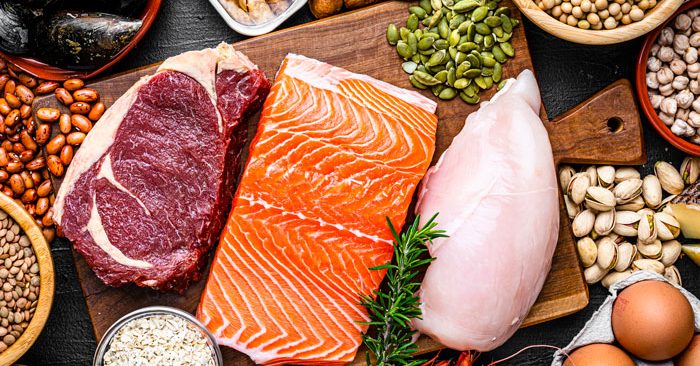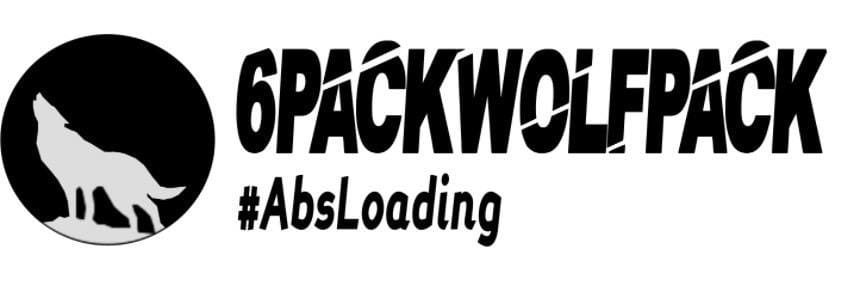Here are the high protein, low calorie options you guys can explore to get right!
10 high protein foods
How much protein should you eat, and what are the best dietary sources of protein? Follow our nutritionist’s guide to discover how to get all the protein you need.

1. Lean Meats
- Chicken Breast: Low in fat and high in protein, perfect for muscle building and weight management.
- Turkey: Another lean option, great for sandwiches, salads, and wraps.
- Lean Beef: Provides protein, iron, and B vitamins. Opt for cuts like sirloin or tenderloin.
2. Fish and Seafood
- Salmon: Rich in protein and omega-3 fatty acids, supporting heart and brain health.
- Tuna: A convenient, high-protein option, excellent for salads and sandwiches.
- Shrimp: Low-calorie and versatile, packed with protein and essential nutrients like selenium.
- Cod and Tilapia: Lean fish options with mild flavors, perfect for grilling or baking.
3. Eggs
- Whole Eggs: A complete protein source containing essential amino acids and healthy fats.
- Egg Whites: High in protein and low in calories, ideal for those watching fat intake.
4. Dairy and Dairy Alternatives
- Greek Yogurt: High in protein and probiotics, great as a snack or in smoothies.
- Cottage Cheese: Packed with casein protein, which digests slowly to keep you full longer.
- Milk: Provides protein, calcium, and vitamin D. Opt for low-fat or non-dairy fortified alternatives like almond or soy milk.
- Cheese: High-protein options like mozzarella or ricotta in moderation.
5. Plant-Based Proteins
- Lentils: A high-fiber, protein-rich option that’s great for soups, stews, and salads.
- Chickpeas: Versatile and protein-packed; use in hummus, salads, or roasted as a snack.
- Black Beans and Kidney Beans: Excellent for chili, tacos, or grain bowls.
- Edamame: A soy-based snack rich in protein and fiber.
- Tofu: A versatile soy product that absorbs flavors well in stir-fries or marinades.
- Tempeh: A fermented soy product with a firmer texture and nutty flavor, perfect for grilling or sautéing.
- Seitan: Made from wheat gluten, it’s a high-protein, low-fat meat alternative.
6. Nuts and Seeds
- Almonds: A healthy snack with protein, healthy fats, and vitamin E.
- Pumpkin Seeds: High in protein, magnesium, and zinc, ideal for snacking or adding to salads.
- Chia Seeds: Tiny but powerful, they provide protein, omega-3s, and fiber.
- Hemp Seeds: Rich in protein and omega-3 fatty acids, great for smoothies or oatmeal.
- Peanuts and Peanut Butter: Affordable and protein-rich; choose natural, unsweetened varieties.
7. Grains and Pseudograins
- Quinoa: A complete protein and a great alternative to rice or pasta.
- Oats: High in protein and fiber, perfect for breakfast or baked goods.
- Farro and Bulgur: High-protein whole grains for hearty salads or side dishes.
8. Protein Supplements
- Whey Protein: A fast-digesting option ideal for post-workout recovery.
- Casein Protein: Slower-digesting, perfect for evening snacks or shakes.
- Plant-Based Protein Powders: Made from peas, rice, or hemp for vegan-friendly options.
9. Specialty Options
- Egg White Wraps or Protein Wraps: Great low-carb, high-protein alternatives for sandwiches.
- High-Protein Pasta: Made from lentils, chickpeas, or edamame for a protein boost in pasta dishes.
10. Protein-Rich Snacks
- Jerky: Beef, turkey, or plant-based varieties, low in fat and high in protein.
- Hard-Boiled Eggs: Convenient and nutrient-dense.
- Protein Bars: Choose ones with minimal added sugar and natural ingredients.
Tips for Maximizing Protein Intake
- Include a source of protein in every meal to stay satiated and support muscle maintenance.
- Combine plant-based proteins (e.g., beans with rice) to create a complete amino acid profile.
- Prepare protein-rich snacks for on-the-go fuel.


